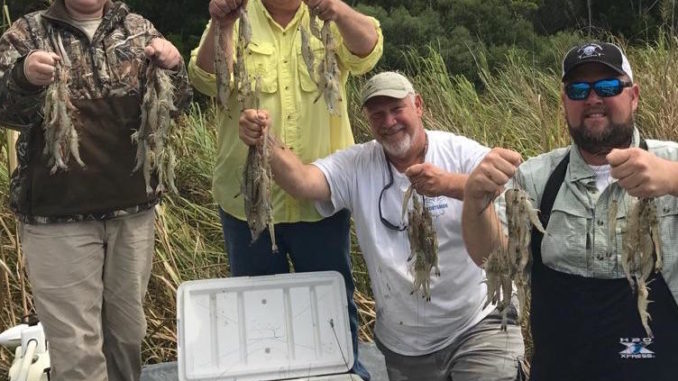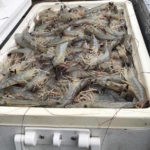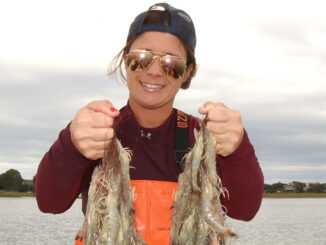
Catch a limit quickly with these tips
As Hurricane Irma was occupying many people’s minds, Stacy Atkinson with Team Low Country Wildlife and a couple of his friends had shrimp on their brains this past Saturday. It was opening day of shrimp baiting season, and they weren’t going to miss it. It didn’t take them long to get their limit.
The keys, said Atkinson, include putting bait in the right places, using the right net size, shrimping during a moving tide, and having someone that can control the boat while his buddy tosses the cast net.
Using a standard set of 10 shrimp poles, Atkinson sets them up in a straight line stretching just under 100 yards. He uses Bait Binder to make bait balls or patties, and throws the bait around and between each pole.
“The Bait Binder is so much easier than the old clay and fish oil mix,” he said, noting the product is quicker, less messy, and brings the shrimp in just as well as the slower and messier old fashioned way.
Atkinson likes setting his poles up near creek channels or in deeper channels in bays, and he prefers a good mix of sandy and muddy bottom.
“I don’t want pure sand, but not pure mud either. I think that’s a personal preference,” he said.
When it comes to proper net size, you might think that means throwing a giant net to catch more fish on each cast, but Atkinson said that’s not the case. The trick, he said, is throwing a net that you are capable of getting to open all the way up. And that changes from one person to the next. While a first mate of an offshore fishing vessel may be able to consistently throw a pancake with a 16-foot net, that’s a disaster waiting to happen for your average sportsman who doesn’t throw a net as often.
“A net size of 8 to 10 feet is good for your amateur shrimpers like me. Practice makes perfect on throwing the net. Don’t wait until you get on the water to realize nobody in the boat can throw it. Practice in the yard,” he said.
After tossing out bait, Atkinson said it usually takes about 20 minutes for the shrimp to show up, so he goes back to the first pole where the bait has been sitting the longest, and starts tossing the net. This is when having a confident boat driver comes into play. You don’t want to be standing on the deck of the boat throwing a cast net with a boat driver that isn’t sure about what he’s doing.
At this point, Atkinson goes up and down the line of poles, tossing the cast net where he set the bait. The real work starts, he said, once you’re back home with a cooler full of shrimp that need to be deheaded, so he suggests anglers use any downtime on the water to begin that process.
“Deheading them as you go will keep you from having to do them all at once when you get finished. Essentially, when you’re done shrimping and you’re tired, the shrimp are already cleaned when you get home and you don’t have to sit down and dehead a whole cooler at once,” he said.
The South Carolina limit of shrimp caught this way is 48 quarts whole, or 29 quarts deheaded, per day. Cast nets are required to have a minimum mesh size of 1/2-inch, and the 2017 season lasts until noon on Nov. 7.





Be the first to comment